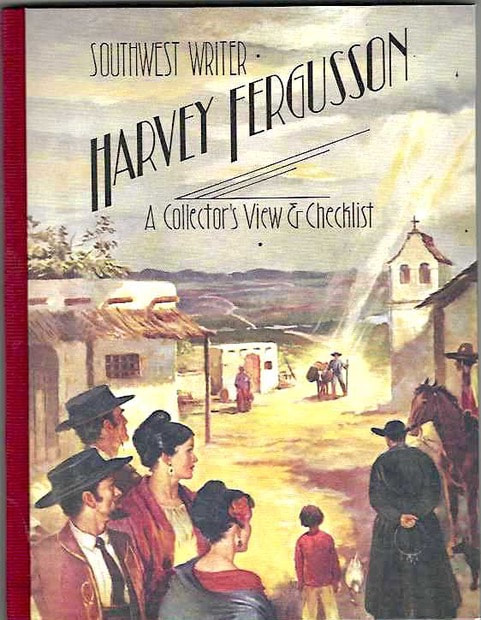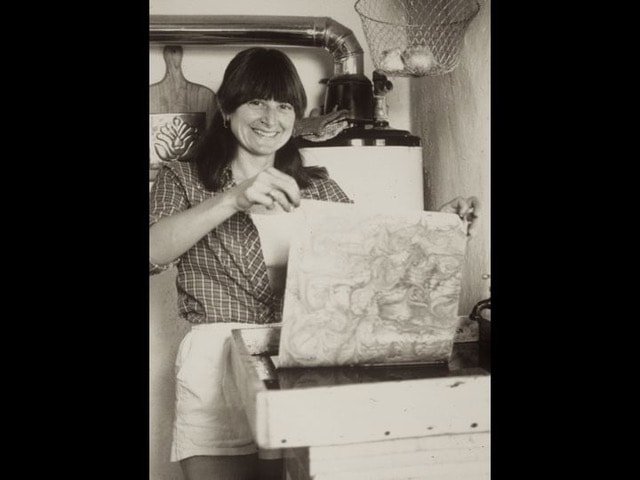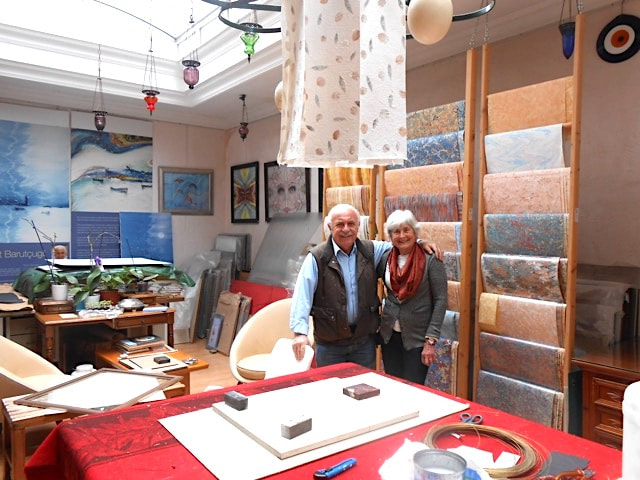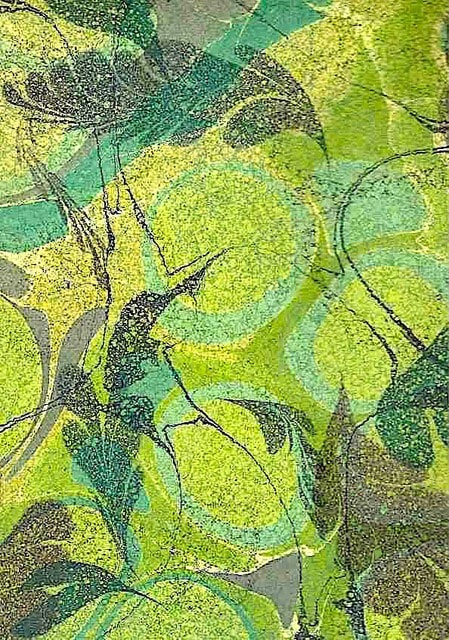|
By Jessica Rath
When you think of books and art, you might think of Nobel-prize winning authors such as John Steinbeck or Thomas Mann, or of books of poetry where every word is carefully crafted and positioned. But one rarely thinks of the physical book itself – the paper, or the way the words are printed. Not so for long-time Abiquiú resident Pam Smith: she belongs to a relatively small group of people who dedicate their art to the way the book looks. Everything is done by hand: the printing, the binding, even the paper. Together with six other individuals, Pam has been selected for the 2024 Governor’s Awards for Excellence in the Arts. She will receive the prestigious award for 28 years working as founding director of the Press of the Palace of the Governors, for her career as curator, educator, and award-winning book designer/letterpress printer, and as proprietress of the widely recognized MarbleSmith Papers which she started over 50 years ago. The awards ceremony will be held on Thursday, Oct. 10, 5:00 pm, at the St. Francis Auditorium at New Mexico Museum of Art. Pam grew up in a small town in Illinois, got her degree in journalism from the University of Illinois, and then lived in Chicago for several years. Some of her friends were seriously interested in Southwestern Art and had opened one of the very first Native American art stores in the city. When one of the buyers invited her to come along to Santa Fe for Indian Market, Pam agreed and enjoyed her time in New Mexico so much that she decided to relocate there. That was in 1972! For 15 years she lived in Santa Fe, and in 1989 she moved to Abiquiú. I don’t know many Anglos who have lived here for that long.
While in college, Pam took a class about letterpress printing, at a time when newspapers and other print media had turned to offset printing. She loved everything about it because it is done manually – exactly as Gutenberg had invented it, almost 600 years ago. Shortly after she had settled in Santa Fe, somebody told her about a job that would soon be available: The New Mexico History Museum wanted to establish a working exhibition of the state’s historic printing equipment and was looking for a person to get this project off the ground. Pam excitedly accepted, started as a volunteer, and soon rose in the ranks to become the director of the Palace Print Shop, as it is known. Within weeks she was producing broadsides, replica newspapers, postal cards featuring historic photographs, notecards embellished with ancient pottery designs and even Governor Bruce King’s Christmas cards. Each of the 500 cards was hand-fed into the jaws of a 19th century treadle and hand-operated press. But most importantly, she launched a limited edition publishing program with books focusing on New Mexico history and printed on the historic New Mexico presses. They won awards and garnered national attention.
With a passion for teaching her skills, Pam gave workshops on hand bookbinding, illustrative techniques, paper marbling and printing for both adults and children. She also traveled with the Van of Enchantment, a Museum outreach program that took book arts into classrooms and libraries throughout the state. She continued the work until her retirement in 2001.
Pam briefly explained letterpress printing to me: “Each raised character sits on a single metal piece. The letters are stored in a configured box known as a California Job Case. Like typewriter keys, the case layout facilitates the hand selection of characters. In turn, each character is placed in a hand held tray known as a composing stick to slowly assemble an entire text block. And so everything is physical about it. At the same time, it’s a creative process: you have to keep the whole project in your mind in order to create something that is pleasing, as well as easy to read". She’s talking about the empty spaces between words: they’re created by metal pieces as well, and the typesetter can choose between different sizes to find the balance between readability and aesthetics.
While she worked at the Print Shop, Pam gave workshops at the Museum about hand bookbinding, illustrative techniques, paper marbling and printing for both adults and children. She also traveled with the Van of Enchantment, a museum outreach program that took book arts into classrooms and libraries throughout the state. It wasn’t only the printing process which intrigued Pam. She took classes in paper making and she went to California to study hand book binding. She explored all the different components and materials that are involved in book making. And when she came across paper marbling, she knew that was what she really wanted to do. Here is how she describes the process: “Marbling is very magical. It's almost like developing a photograph. It's instantaneous: you sprinkle the colors down onto the gel. Then, using combs and small tools, you manipulate the paint into floating patterns. Next, you take a piece of paper pre-treated with a mordant and roll it down onto the surface of the gel. You pick it up, and then there's (hopefully) this beautiful sheet! Right away you run it under water and just like that! There it is: the sheet left to dry”.
Does this process have to be done for each sheet, I wanted to know.
While each print is a unique monotype, parts of the preparation don’t have to be done for each sheet, I learned, but it still takes time. Pam often gets orders for the covers of book editions, which may mean 100s of sheets per order. She once was commissioned to produce an edition of 1,000 sheets and completed the job cranking out 70 sheets a day!
“I would prepare the gel for 70 sheets the night before. It is made out of a seaweed called carrageenan. It is perfectly organic. You have to let it sit overnight. That’s a concentrated form”.
“When I first started, I was reading little children's school pamphlets from England to teach myself the process. And they would tell you that the best water to use in creating the gel is rainwater, because many other waters contain minerals that can disturb the process. Well, rainwater was a bit of a problem in New Mexico!” “I was using actual dried seaweed, as well, boiling it with water and then straining out the residue. Now we use a concentrated form of carrageenan, a powder that is simply blended with water. No muss, no fuss. Much faster and more reliable”, Pam stated. My next question was, How did the people who needed marbled paper find out that you were making those beautiful sheets? “Well, the handmade book world is fairly small”, Pam told me. “There is the Guild of Book Workers (GBW), that's probably the largest organization. They hold an annual Standards of Excellence Conference that I would go to and where I’d sell my papers. It's always held in a different city, and I went to nine of them. Then there are many California private presses. I did a Barry Moser book called “Outside” for the people out there; I worked with a wood engraver who did a book on exotic plants in the Huntington Library Gardens; I have clients from all over the country. There was a Guild meeting in Toronto, and I sold papers there”.
“But the best thing I did: I was invited to go to a conference in Istanbul. Turkey is thought to be one of the earliest, or maybe even the birthplace of the marbling process. From there it gradually spread into Europe, and then to England and then to the United States. But it was in the period from around 1400 to 1500 when this technique first became popular. And in Turkey it is still a vital contemporary art form. This is one of the reasons I was delighted to be recognized for my work as a paper marbler. Unlike Turkey, this country doesn’t really give that kind of status to paper marbling. At the conference, among marblers from all over the world, another American artist came to me in awe. Someone there had asked her for her autograph, an all-time first. Who in this country would ask a paper marbler for their autograph?” Pam laughed as she was telling me this story.
Her passion for this particular art form clearly dominated our conversation. Pam went on:
“It's a very controlled process. People think that for marbling you just throw a little oil paint on water. No, it's all balanced. I work with gouache colors. I don't work with oils. There are very traditional designs that have come down from centuries ago, and they all have names. There's Turkish Stone, there's Large Dutch, there is Getgal. They all have names, and those are very ancient patterns. They are very precise and very graphic, and they inspired me to do more botanical shapes and forms, which really comes out of the Turkish tradition as well. There’s a pattern called Oak Leaf, and I would do different things with the oak leaf pattern”.
“You see, once I established control over the historic patterns, I turned to something more abstract, because then contemporary book binders could use it. Every material used in a handmade book makes a statement about the text. It's all interpretative. And so, when I did something on fly fishing, I made sure that it was watery. There's a thing called French Shell that makes a dot pattern with a halo around it, it almost looks like fish eyes. So I would use that in the whole process”.
Pam’s trip to Turkey and her visit with some of the accomplished marbling artists there confirmed the direction she was already moving toward: to use the process to create more abstract, rather than tightly patterned, papers using alternative tools. She gave me an example:
“Recently I started working with a floral frog, a metal piece you put at the bottom of your vase which has little pinpoints sticking up to which you can attach the flowers. I started using that to dip into my paint and I’m getting this intense dot pattern. That’s what I’m experimenting with right now”.
My final question is about Pam’s clients, current and past. Who orders her marbled creations? It turns out there is quite a range.
“For example, I worked for people who made replicas of 19th-century telescopes, and they wanted marbled paper tubes. I did a lot of paper for them, because they consistently used the same patterns. Then I did work for a store in DC called Bookmakers International; I did a series of 25 different patterns for a little catalog that they sent out. I worked for a company in England, a very old and venerable book material store in England called Shepherd’s. I always thought that was funny, sort of like taking coals to Newcastle, because in England paper marbling has a long history and is much more popular than here”. Pam continued: “And then I worked for various individual private presses all over the country, as I have talked about before. Some were big clients; for example, I did a series of papers for a woman in Texas who did potpourris. She wanted her boxes to be covered with marbled paper, and they all had special themes, Cranberry Whimsy was one, and Ocean was another. So I had to come up with a design that fit the subject matter”. “I even did Wainscoting. It's a wall covering that’s applied to the lower third of a wall. Somebody wanted to use marble paper! And I did reproduction pieces for commercial books. They would reproduce the paper mechanically and use it on their publications. And my latest thing, this May, was to teach a class to 24 students at Ox-Bow School of Art – an art program run by the Chicago Art Institute in Michigan, and that was fabulous. Now that I’m 80 it probably was one of the last things I’ll be doing, to tell you the truth, but it was great!” On top of all these activities, Pam managed to research and write a book: Passions in Print, Private Press Artistry in New Mexico, 1834 - Present. It collects the rich history of private printing and publishing in the state from the nineteenth century to the present. You can find out more about it here. Pam has lived in Abiquiú for about 35 years, but not many people here know about her or have any idea what she does, especially those who moved to the region during the last ten or so years. Paper marbling? I bet many of our readers have never heard of it. And yet, it is an important component of an equally little-known vocation: the art of handmade bookmaking. In a world that is dominated by mass-production, a book which involves an individual’s creativity and sense for beauty at every step is truly something magical. The award ceremony on the 10th of October is open to the public; it begins at 5:00 p.m. at the St. Francis Auditorium at New Mexico Museum of Art. An exhibition of work by the seven 2024 recipients will be on display in the Governor’s Gallery on the fourth floor of the Roundhouse beginning Friday, Oct. 11, with an opening reception from 2:00 – 3:30 p.m. A short film about Pam will be shown during the awards ceremony: “They had a guy come around who spent all day here doing a film in my studio”, Pam told me. If you can, go and attend the award ceremony. You could ask Pam for an autograph – I’m sure she’d be tickled pink! Somehow, it seems fitting that an Abiquiú resident has been chosen for this great honor. It’s amazing how this area keeps attracting not just painters, but other artists with unique and special talents. Thank you, Pam, for a fascinating interview. Although she was one of the first people I met when I moved to Abiquiú in 2000, I had no idea about the extent of her accomplishments. She was always ready to help others, but rarely talked about herself. It’s time she gets the recognition she deserves!
12 Comments
Janice Quinn
9/27/2024 08:33:00 am
Great article Jessica! It’s wonderful to see Pam’s unique artistry and incredible talent recognized in our community. The Governor’s award is so well deserved.
Reply
Jessica Rath
10/3/2024 09:36:16 am
Thank you, Janice! Yes, the award is absolutely well deserved.
Reply
Michael Quinn
9/27/2024 10:36:50 am
Great story!
Reply
Jessica Rath
10/3/2024 09:36:43 am
Thanks, Michael!
Reply
Rabia van Hattum
9/27/2024 06:29:47 pm
Thank you for highlighting the work of our dear friend Pam Smith. She is most likely the most prominent and accomplished ebru artist in North America. We are grateful to have benefited tremendously by participating in her workshops over the years. And we also had the pleasure of meeting Master ebru artist Hikmet when we were recently in Istanbul.
Reply
Jessica Rath
10/3/2024 09:44:48 am
I bet any workshops with Pam must have been an inspiration, Rabia. And thank you for sharing that you met Mr. Hikmet -- how lovely! And for sharing Pam's outstanding status in the North American ebru community.
Reply
Carol Wehrer
9/28/2024 01:20:00 am
I have admired Pam's work for years. I was lucky enough to see all of her exquisite work as she mailed them out into the world! Congratulations for your recognition in your artwork.
Reply
Jessica Rath
10/3/2024 09:47:18 am
Good to know that there are indeed people who have admired her work for years, Carol.
Reply
Andrew Furse
9/28/2024 10:32:47 pm
Thank you for this article. I hope to get to the awards on the 11th.
Reply
Jessica Rath
10/3/2024 09:50:34 am
Thank you, Andrew, please go to the awards ceremony -- maybe bring others and carpool! And what a lovely image for books: "Cathedral for Ideas". So apt.
Reply
Larry Bell
9/30/2024 11:25:00 am
Kudos to you, Jessica.
Reply
Jessica Rath
10/3/2024 10:01:42 am
How kind of you, Larry. Yes, Pam so deserves the recognition she's finally getting. I think it somehow speaks for her and her work that this award finally puts her in the spotlight. I mean, she doesn't try to be in the spotlight but is focused on her art and her work. This is a rare and positive quality, in my eyes.
Reply
Your comment will be posted after it is approved.
Leave a Reply. |
Submit your ideas for local feature articles
Profiles Gardening Recipes Observations Birding Essays Hiking AuthorsYou! Archives
July 2025
Categories
All
|











 RSS Feed
RSS Feed